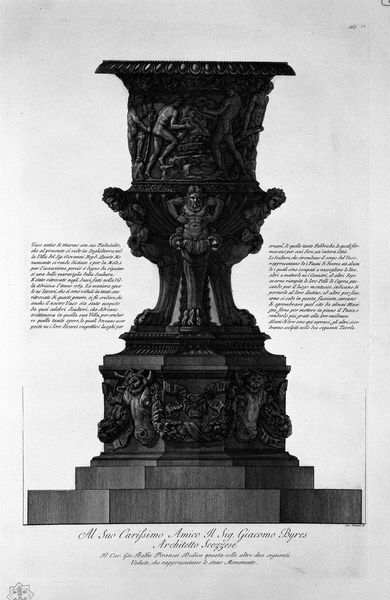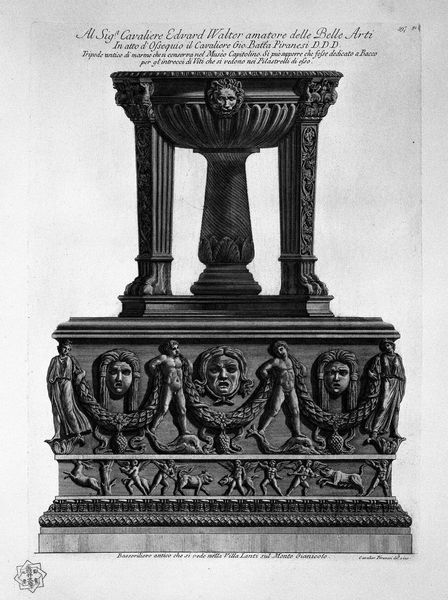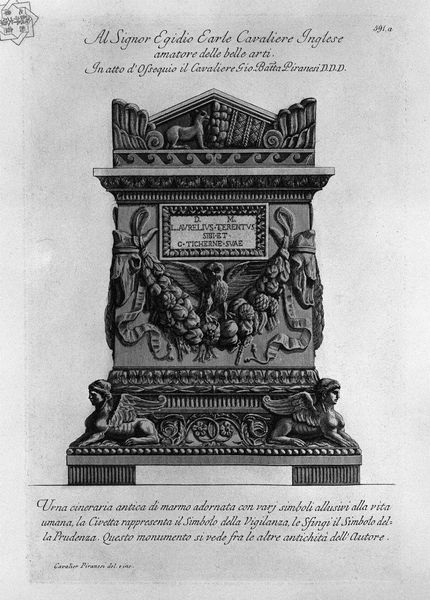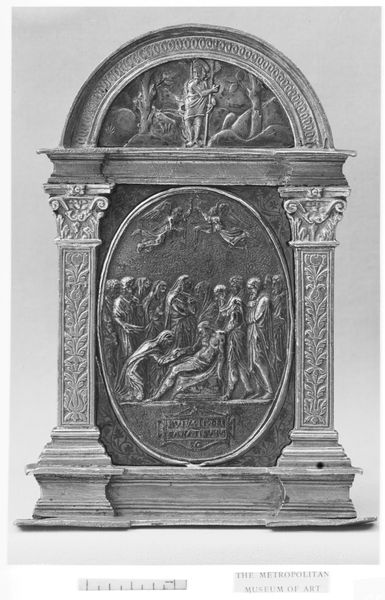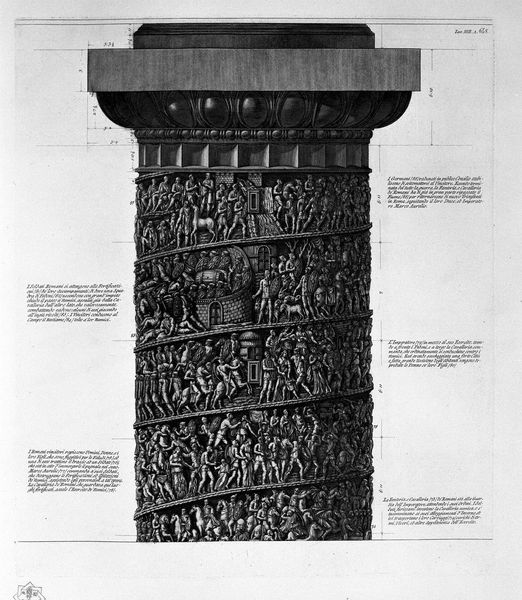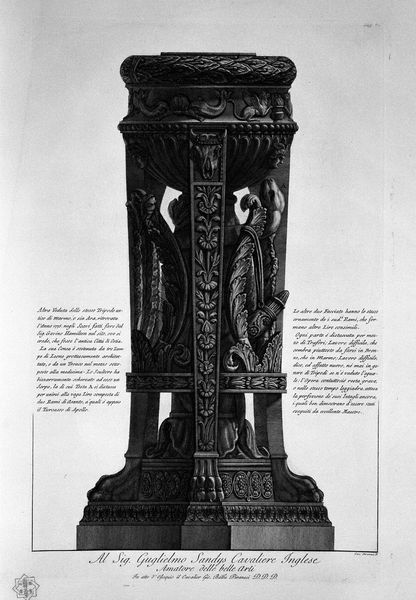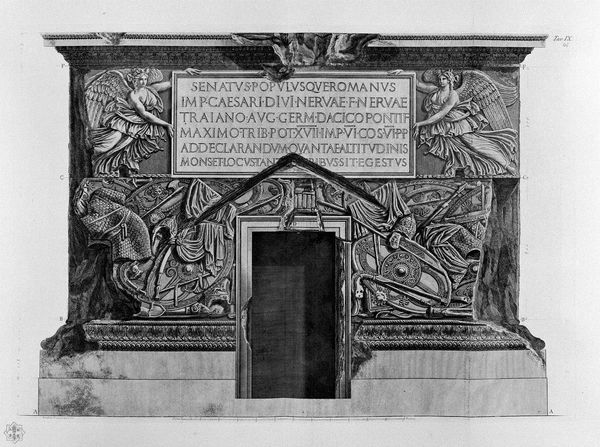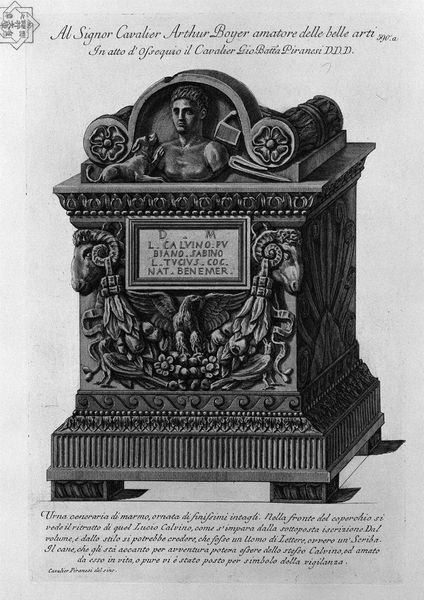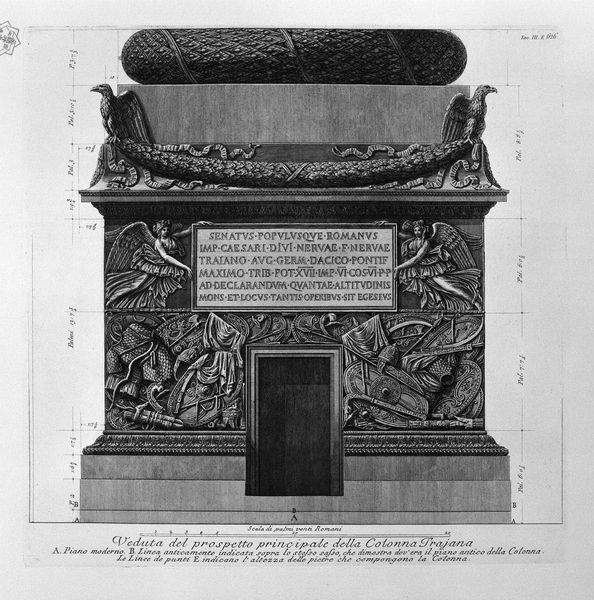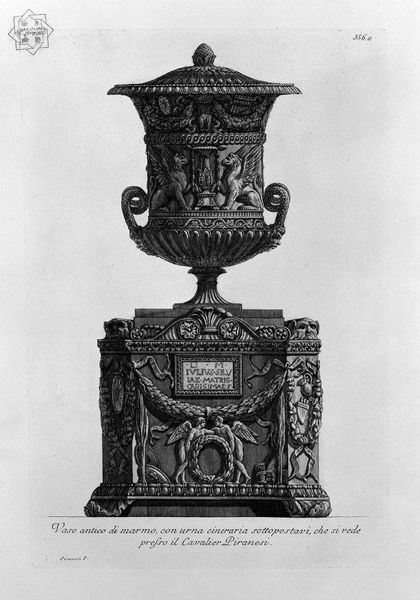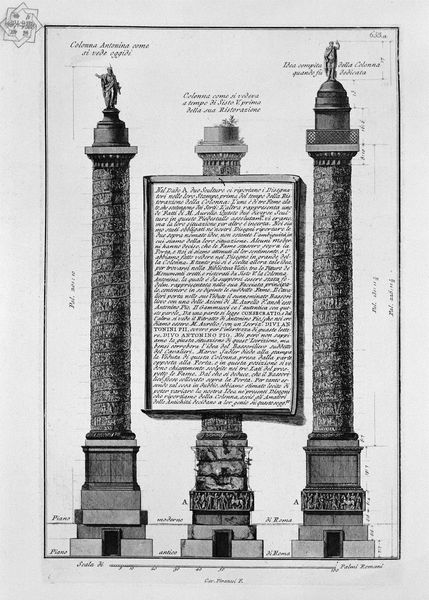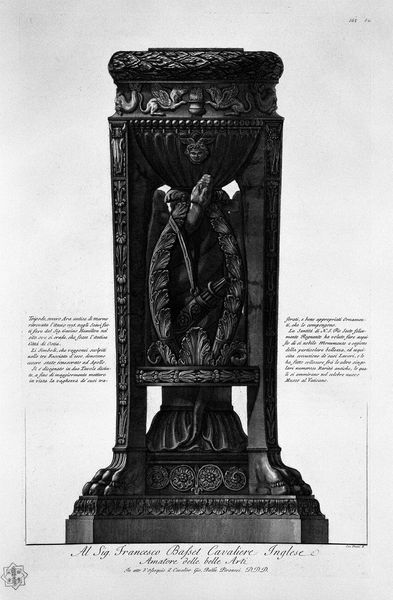
drawing, print, engraving, architecture
#
drawing
# print
#
sculpture
#
charcoal drawing
#
charcoal art
#
romanesque
#
geometric
#
ancient-mediterranean
#
column
#
history-painting
#
academic-art
#
engraving
#
architecture
#
realism
Copyright: Public domain
Editor: So, this is Giovanni Battista Piranesi's "View of main facade of the Antonine column, in six tables." It’s a print, I believe an engraving, detailing the column. What strikes me is the immense detail in depicting the sculpted figures wrapping around the column. How would you approach interpreting this? Curator: Well, let's consider Piranesi's process. As an engraver, he wasn't just reproducing an image. He was interpreting Roman power through a very specific labor. The act of engraving itself – the painstaking, repetitive process – mirrored, perhaps unintentionally, the endless documentation of imperial campaigns depicted on the column itself. The print medium allows for the mass production and consumption of Roman glory. Consider the relationship between the material, engraving, and the subject matter. Editor: That’s a really interesting point – the act of replicating it changes the meaning. Does that affect how we view the original column itself? Curator: Absolutely. Piranesi's prints weren't just documents; they actively shaped perceptions of Roman grandeur. Think about who was buying these prints and how they used them. Were they Grand Tourists? Aspiring architects? This is how cultural authority gets circulated. The physical print becomes a commodity imbued with Roman ideals, accessible to a wider audience through the reproducible nature of engraving. Does this proliferation of images enhance or dilute the original monument's impact? Editor: So, the print becomes its own form of propaganda almost? Thinking about how materials and their accessibility affect how history is consumed and understood… that's given me a new way to consider artwork. Curator: Precisely. By understanding the materials and the process, you're excavating layers of meaning embedded within the image and its social function. This brings us closer to understanding not just the object itself but the power dynamics at play.
Comments
No comments
Be the first to comment and join the conversation on the ultimate creative platform.

